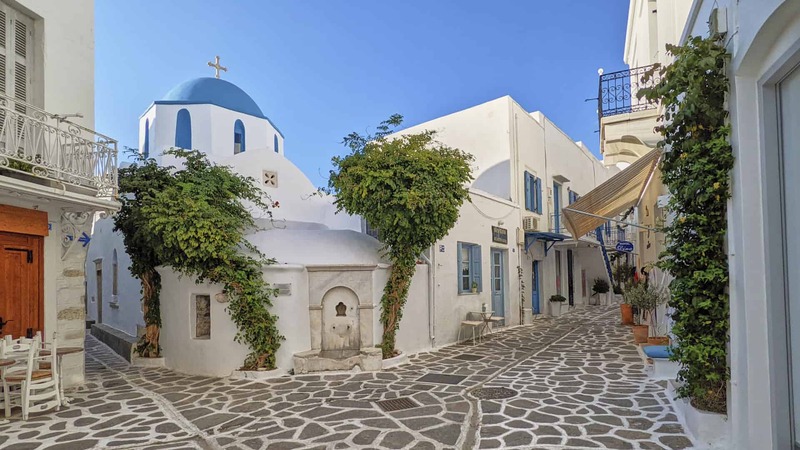
There are numerous archaeological sites to see in Parikia
In the harbor of the island in Parikia, the capital of Paros, you can find the commercial and passenger ports in addition to the village's famous mill. A walk through Parikia's winding alleys will captivate you just as much as the charming villages that call it home. Ekatontapiliani and the pinewood are popular destinations for visitors. Attractions such as Agios Constantinos church, the hill of Agia Anna with its two mills—a distinctive feature of Paros—, the annual palm trees that line the shore, and a wide variety of stores add to the appeal.
The island's port, Parikia, has a constant flow of ships carrying passengers and goods throughout the year, while the summer and spring see the most traffic. Paros as a city has been inhabited since prehistoric times, but its current shape is due to the 13th century Venetian construction of the castle atop the hill within the city. A lot of the materials used to construct this fortress came from the ancient Demeter temple. Slightly higher up the hill is the church of St. Constantine, a Byzantine landmark of Paros; in this part of the city, at Kastro (the Castle), you may see houses and smaller churches (St. Mark, St. Anna, and St. Stylianos). From Parikia's hilltop and the coast-running street (Giannis Parios St.), you may observe the most breathtaking sunsets in all of Paros.
Parikia, Paros's main market street (Lohagou Fokianou st.) is a sight to behold, lined with beautifully restored historic homes and a variety of stores on either side. Amidst the city's little tourist attractions and antique stores, the Dimitrakopoulos family mansion, fountains designed by Mayor Mavrogenis, and Venetian homes all come together in perfect harmony. From the Mill at Bountaraki to Livadia, along Parikia's beach, Giannis Parios Street is home to most of the businesses, taverns, restaurants, bars, and cafeterias.
In Parikia, you may visit several different sites. The Paros Archaeological Museum is notable for its collection of artifacts from Paros and Despotiko of Antiparos, the pottery studio and beachside ancient cemetery are the two most significant archaeological sites. Other notable sites include the Castle and Ekatontapiliani, which is possibly the most well-known church in Greece.
Located four kilometers southwest of Parikia, the verdant Valley of the Butterflies is a biotope on Paros that is inhabited by Tiger moth butterflies.
Parikia has all the services that one would expect to find in a major city. In addition to a post office and an OTE-COSMOTE (Hellenic Telecommunications Organization) branch, there are tourist information centers and shops to rent cars of all kinds. Alpha Bank, Eurobank, Piraeus Bank, and the National Bank of Greece all have branches here as well. At Parikia, you may find the Health Center in addition to private offices and clinics. Finding a place to stay here is easy, and there are plenty of alternatives to suit any budget. All three of these towns—Livadia, Krios, and Parasporos—have lodging options, including hotels, motels, and campers.
